
Pheonix Rising In The Crease; An Alaskan’s Journey To The NHL’s Los Angeles Kings Organization
The following appears in the April issue of Alaska Sporting Journal:
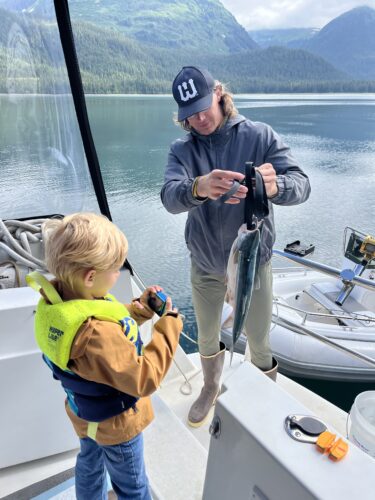

BY CHRIS COCOLES
Professional athletes know the drill that their immediate future – through a trade, a release, a promotion or demotion – is a phone call or text away. That’s part of the unpredictable nature of playing professionally. In a matter of seconds, everything can change – a change of uniform, a change of address and a change of how the team feels about you.
For ice hockey goalie and Alaskan Pheonix Copley (yes, that’s the correct spelling of his first name; more on that later), moving around the sport’s stopovers toward the top has been commonplace. But the now 33-year-old once found out he was changing organizations in the most Alaskan way you can imagine.
In the summer of 2015, the National Hockey League’s Washington Capitals acquired star forward T.J. Oshie from the St. Louis Blues for a third-round draft pick, veteran forward Troy Brouwer and the then 23-year-old prospect Copley, who was born in North Pole and still calls the Christmas-famous community just southeast of Fairbanks home.
Such a transaction usually means a flood of phone calls, texts and emails – some from friends and family, but more importantly, messages via his former and future teams with details and logistical information. Except that initially, nobody could get a hold of or receive a reply from one particular piece in the trade.
“We float down the Gulkana River for a four-day trip every summer – my brothers and my stepdad. We were doing that in the summer of 2015,” Copley says of the annual tradition he enjoyed with stepdad Mark Sanford and brothers Matt Sanford and Navarone Copley (that’s his real first name too; more on that later).
The adventure was always a big part of Copley’s summer recovery trip back north, and the family enjoyed fishing for trout – cooking up their catch as part of the menu – and loading up on a hearty breakfast of eggs and all the fixin’s each morning.
But this was no ordinary float. Little did the family know how one of its members’ careers was about to change.
“On this trip, on the morning that we left I’d been traded, and it happened just after we’d lost service. So for four days I had no clue,” Copley, now playing in the Los Angeles Kings organization, says with a laugh.
Can you imagine how perplexed general managers for both the Capitals and Blues were to have one of the principles in this life-altering event ghosting them? Welcome to summer in the Last Frontier.
“After the four-day float we get to the pull-out on the river and we drive back towards town. There’s a mountain range that you drive through, and once you get to the other side you start getting service again,” Copley says. “We got to the top of that pass and all of a sudden my phone started blowing up with ‘What happened to you?’ (texts and voicemails). I saw that I’d been traded and had messages from the coaches and GMs wondering where I was.”
Only in Alaska! Yet, considering the nomadic journey that has helped define his hockey career, it’s probably on-brand for where Copley was and where he’s at now.
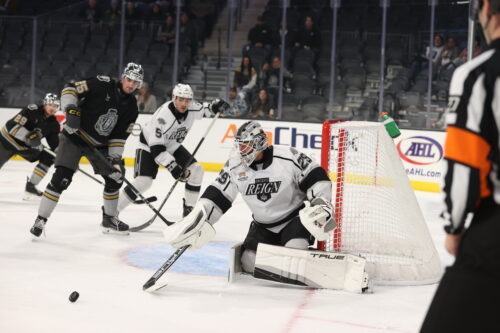


YOU CAN TAKE THE ALASKAN address away from a local, but you’re not allowed to strip him of his tough-as-sandpaper moxie. Such is the case for Copley, whose hockey resume is hardly a traditional path to the sport’s ultimate destination, the NHL. For every Sidney Crosby, the Pittsburgh Penguins future Hockey Hall of Fame center who went from No. 1 overall pick in 2005 to instant elite playmaker in the league, there’s a Pheonix Copley who gets there the unconventional way.
His backstory includes being undrafted by every NHL team, plus a whirlwind of stints in various junior, college, lower-tier pro and developmental or farm system-like leagues that resemble a hot bowl of alphabet soup: the NAPHL, NAHL, USHL, WCHA, ECHL, AHL. For some aspiring hockey players, the three key letters are N-H-L.
“Growing up, there wasn’t always a clear path to pro hockey or to the NHL, or a successful hockey career, because it’s a small area. Hockey is big there, but comparatively to other markets, it’s not a huge hockey place,” Copley says of his Alaska home, which is where he really started developing higher expectations of playing more serious hockey.
“I think it was a long journey. In my mind I always thought I first wanted to play junior hockey, so I’d see guys play junior hockey and I thought, ‘I can do that; I can play like that goalie.’ And then when I got to college it was kind of the same thing. For me, it was just kind of incremental. And I really wasn’t thinking about the NHL. Just get to the next level and do what I have to do to get to that next level. Just make the adjustments and believe that I could make the next level and just see the big picture.”
“When you watch the game you see the guys and think, ‘They all made it to the NHL.’ But you don’t realize the backstories and the grind that went into everything. But everyone had their challenges to go through to get to whatever league they’re in and wherever they’re trying to go. There’s no real easy path. It’s a matter of pushing through a lot of adversity. Whoever can keep their head above water for the longest, the cream rises to the top if you keep working. That’s the way I look at it and kind of how my path has been.”
As he grew older and more confident in his abilities, Copley had to stretch his legs outside of Alaska. First stop was in Southern California, where he spent a frustrating 2009-10 season with his team, the California Titans, in the 18-and-under North American Prospects Hockey League (NAPHL). Copley was the team’s backup goalie as a 17-year-old and rarely played. (“I just thought, ‘Now what am I going to do?’” he says.)
As it turned out, a lifeline appeared in the form of a top U.S. junior hockey league, the North American Hockey League (NAHL). A new team, the Corpus Christi (Texas) Ice Rays, held open tryouts and Copley excelled enough to earn a roster spot. That provided valuable playing time and he drew the attention of an even more advanced junior circuit, the United States Hockey League (USHL), though this courtship came with a bizarre plot twist.
“I got invited to a USHL camp and I ended up making the team, but they had three goalies. It was kind of a weird situation in that they told me I’d made the team but they didn’t roster me,” Copley recalls. “And I had another USHL team call me and say, ‘Hey; I know you think you’re on this team, but we’re going to put you on our roster.’ So I said, ‘Oh; I’m not on the roster?’ ‘No, we’re reading it right now and you’re not on their roster.’ I said, ‘I want to be on a roster,’ so they put me on the roster.”
That team happened to be the Tri-City Storm in Kearney, Nebraska. But when the Storm picked up another goalie who would eventually be an NHL draft pick, Copley was traded to the Des Moines (Iowa) Buccaneers, with both stints leading to his opportunity to play Division I college hockey at Michigan Tech University. Copley was on his way.
“I had to keep grinding and waiting for opportunities and trying to make the most of them when they happened,” says Copley, citing his Last Frontier upbringing to prepare for that arduous road to hockey success.
“I think to live up there you have to have a certain level of grit … And certainly there have been tough times in my career where I’ve had to kind of dig deep. I think for sure having that Alaskan in me has helped me get through it, and I’m thankful for my upbringing. I miss it and I enjoy it up there.”
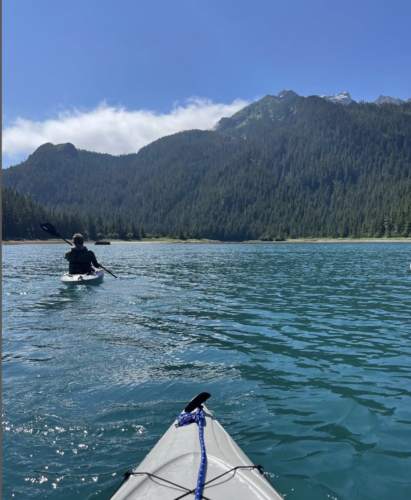

WHILE HOCKEY PLAYERS ARE generally unflashy and embrace the team concept of the sport, goaltenders get to express themselves in the form of their goalie masks, which often feature intricate designs that look like they belong as much in an art gallery as a team dressing room. Some players pay homage to their families, former coaches or pets with caricatures of them. Others opt for spiced-up team logos, and still others celebrate the city or region they play in. And many, like Pheonix Copley, run it back to their hometowns/states/countries with tributes. During his stint with the Capitals in Washington D.C., Copley’s mask artist Dave Gunnarsson created a patriotic eagle but with an Alaskan Native motif. Like many goalies’ creative ideas, it’s quite a visual that fans, teammates and seemingly everyone geeks out over.
“I feel like Alaska is in my DNA, and for goalies the mask is a way to express yourself. I’ve just found different ways to pay tribute to Alaska, or I’ve also paid tribute to old goalie coaches,” Copley says. “Just things I think are important to me. And Alaska is obviously important to me. I just like paying homage to my home state and hometown.”
And wherever he’s played, he insists on one trademark piece of art: candy canes. And why not, given his North Pole roots? The community of about 2,500 has cashed in on its Christmas kitsch by marketing the bit in the form of year-round holiday spirit. From the Santa Claus House – featuring reindeer for patrons to pet – to the mailing address for kids’ letters to Kris Kringle and decorations that never get put away, it always feels like December 25, whether residents like it or not.
“Honestly, it always got too cold to pay attention! But a lot of the stores and restaurants will keep their Christmas lights up year-round. That’s something that they do just because it’s North Pole,” Copley admits. “Christmas is probably no different than anywhere else. In some places it might actually be even more festive because it’s so dark and cold in December that it’s not the time to go out. Most everyone is inside.”
But the candy canes will always be Copley’s conduit to where he grew up.
Born in North Pole, Pheonix’s unique name and spelling was expected after older brother Navarone was born. Pheonix says his sibling’s name was based after his parents’ love of the epic 1961 World War II movie The Guns of Navarone (Elvis Presley’s widow Priscilla named her son Navarone as well). Copley’s mom Mary once said in a story about her son when he played for the American Hockey League’s (AHL) Chicago Wolves, “Once you have a Navarone, it’s hard to have a Jeff or a Michael afterward.”
“I don’t really know where they got Pheonix from, to be honest,” her second son reinforces, “but I think after they named their first kid Navarone, they thought, ‘We better come up with another creative one.’”
Creativity on the ice was a big part of Pheonix’s and Navarone’s childhood. After the Ohio move, when he was 7 years old Pheonix, Navarone and Mary moved back to Alaska after she and the boys’ father Peter divorced. After first relocating to Anchorage, the family went back to North Pole when Pheonix was 11.
Both brothers were hockey players in Ohio as well, and while they were both forwards to start out, Pheonix enjoyed taking shots fired by Navarone in their bedroom hijinks. When he found out the Anchorage team he joined had goalie gear, Pheonix was hooked.
Speaking of hooks, fishing was also part of the curriculum for what kids do in Alaska’s isolated Interior.
“It was awesome. I think growing up there, it was just the perks of being in Alaska, which is just normal when you live in Alaska to be doing those kinds of things,” Copley says of the outdoor activities he’d partake in. “Alaska is so unique in that regard – the natural beauty up there means you naturally take part in those things. We’d go on fishing trips down to Valdez along the coast and go river fishing.”
In fact, hockey was just another pastime for the boys, but when Mary wed Mark Sanford, a local North Pole/Fairbanks-area coach who played some pro hockey, it became more than just a game for Pheonix and his brothers.
“Nowadays when kids train year-round, in the summer we’d be goofing off – swimming at the lake, fishing. My brothers and I, since they also played hockey, we would not really be training. But as we got older … (Sanford) showed me and my brothers the work ethic it would take to have success in hockey, so we started skating four or five days a week in the morning before we would go work at his truck shop. And so we’d go in and sweep floors and clean trucks,” Pheonix Copley says.
Sanford took the kids to Fairbanks’ Big Dipper Ice Arena for those early- morning skating workouts before heading to the shop.
“He’s hard-nosed and doesn’t put up with a lot of BS. We’d be working hard in the morning,” Pheonix recalls. “My brothers were forwards, and at the end of our little skates, it was just us at the Big Dipper. He would make them skate lines at the end and I’d be in the crease like goalies do, trying to look busy doing drills so I wouldn’t have to skate lines with them.”
The hard work would eventually pay off.

EACH SUMMER, PHEONIX AND his wife Jess usually return to Alaska at least once, sometimes twice, before he heads back to the Lower 48 for his hockey teams’ training camps. The area in and around Valdez is a favorite family gathering spot, where they’ll fish, hike and even jump into cold water for a refreshing dip.
“It’s awesome. It’s unbelievable to go up there and see my old buddies and family. I’ll always want to go back to Prince William Sound every summer. It’s such a quiet place, so much natural beauty and the town of Valdez is awesome,” he says. “It’s great to get there and recharge and soak up nature. It does rain, but when you get a sunny day, it’s unbelievable. Getting up there at the end of the season and unwinding.” “When I think about fishing right now, when you’re out on the ocean or the river, it’s just so peaceful. Just waking up and fishing. I remember a couple times being out on our kayaks and then heading back to shore. There are some glacial-fed rivers we’ll jump in, and the water’s freezing cold, but it’s so refreshing; the mountains are all around you. It’s quite the place. But that’s what I think about in my Alaska memories.”
Preseason practice means he usually misses out on Navarone’s and Matt’s fall hunting trips. Someday he’ll join them and give hunting a try as well. And though he hasn’t been back to Michigan Tech since his two-year stint there, one summer he and his teammates took advantage of the campus’s Upper Peninsula location to fish for walleye. In fact, his alma mater reminds Copley of Alaska for its remoteness and natural beauty, which he hopes to get back to enjoy down the line.
He’ll always appreciate what the Last Frontier’s lifestyle has meant for him. Copley considers himself a halibut angler more than anything else. But he really wants to target trout and salmon on the Kenai Peninsula’s myriad rivers and lakes as part of his Alaska bucket list.
Just getting a chance to kick back, recharge and refresh his body – both mentally and physically (see sidebar, below, on his nutritional side hustle) – is cathartic.
“Everyone in Alaska kind of partakes in things like that, because there’s only so much to do in Alaska, and that’s one of the biggest things you can do,” he says of fishing. “When you’re up there, even if you really wouldn’t necessarily be a fisherman, if you’re going to live there, somebody will ask you to go fishing, and they’ll say, ‘I’ve got a really good spot.’”
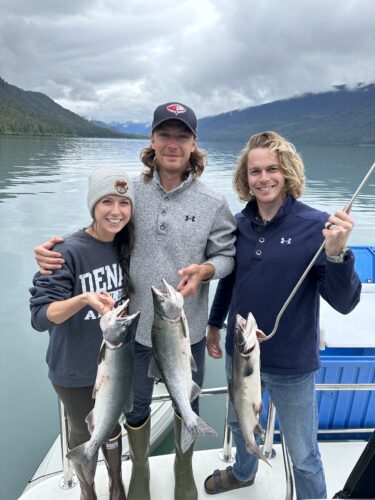
THE STEADFASTNESS TO PLAY hockey in plenty of far-flung hamlets – from Corpus Christi, Texas, to Houghton, Michigan, from Kearney, Nebraska, to Hershey, Pennsylvania, and seemingly everywhere in between – while sticking in the NHL as a full-time goalie remains the endgame for Copley after his off-the-beaten-path itinerary.
He’ll always remember the chaos of his first NHL start. He had first signed with Washington’s organization as an undrafted free agent in 2014. After the trade to St. Louis and the unanswered phone notifications, he was playing with the Blues’ AHL team, the Chicago Wolves.
“All of a sudden they told me I was on a flight to St. Louis. I showed up to St. Louis, and as soon as I landed, (the Blues) were going to Winnipeg. I pretty much hopped on another plane to Winnipeg. I had no clue I was going to play in that game, but after dinner the coaches told me, ‘Hey, you’re going to play tomorrow.’ I was like, ‘Sounds good,’” Copley says nonchalantly. “And it was an early (afternoon) game with no morning skate. So I pretty much went right to the game. I never really got a chance to think about anything that was happening. But it was a whirlwind and pretty cool to be out there on the ice. It definitely is a special experience to get on the ice as a player in the NHL.”
He got his first big chance to be a regular player at that level when St. Louis shipped him back to Washington in 2017 as a somewhat minor piece of a larger trade. That first season back in the nation’s capital, he joined the Capitals’ playoff run as one of the “Black Aces” – a hockey term for players on the postseason roster who could be added to the game lineup in case of injury. Copley never got into a game, but he was in uniform and went onto the ice when Washington beat the Vegas Golden Knights to win its first Stanley Cup championship in 2018.
He skated around T-Mobile Arena in Las Vegas with the sport’s iconic trophy (though because he didn’t appear in a playoff series game, his name doesn’t appear on the Cup, as is sacred hockey tradition). But it was still a special moment, particularly given his journey.
“That kind of set me up for the next season, which was my first full season in the NHL, and getting that work in to prepare myself for those months that I otherwise wouldn’t have set me up as well,” Copley says of playing his role in the Caps’ title run. “So getting to be around a special team like that was really cool, very motivating, and just seeing that team jell and them loving to play hockey together so much, it was cool to see that they didn’t want to ever stop playing and probably wanted to keep playing because they were having so much fun. It was a special time.”
In the 2018-19 season he filled in admirably as the Capitals’ backup goalie, starting 24 games, winning 16 of them, and getting his first taste in the league he worked so hard to reach. It’s a battle that he continues to strive for today.
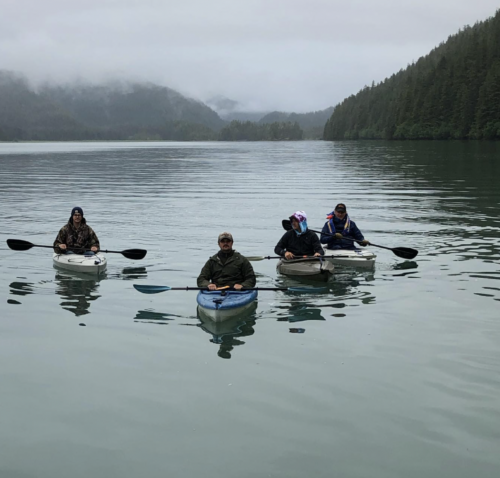
LOS ANGELES IS COPLEY’S most recent stop, and he’s found a home in the Kings’ organization. Signed as a free agent in July 2022, in his first season struggles by veteran starter – and two-time Kings’ Stanley Cup winner – Jonathan Quick and backup Cal Petersen thrust the Alaskan into SoCal savior role.
He led the playoff-bound Kings with 35 starts and 24 wins, and “made his biggest save; saving the Kings’ season,” according to the team-affiliated website LA Kings Insider. Late in the season, they traded for a more experienced goaltender, Joonas Korpisalo, who started for Los Angeles in the playoffs – Copley did make his NHL postseason debut in a relief role that year. But Copley’s inspiring season as an unsung hero made him the Kings’ nominee for the Bill Masterton Memorial Trophy, which is awarded to “the National Hockey League player who best exemplifies the qualities of perseverance, sportsmanship, and dedication to hockey,” as the league states.
“I think it’s a great choice,” then Kings coach Todd McLellan told LA Kings Insider at the time. “The perseverance that he had to believe in himself and also
to take advantage of the opportunity that was presented to him and not hand it back was pretty impressive. His story is quite a story. He’s written a lot of the chapters already by coming into training camp, coming in and taking the net and providing the wins, but we also don’t want his book to be over yet.”
But after winning four of his first eight starts for the big club to open last season as the backup, Copley had to reinvent himself all over again. In practice on December 15, 2023, he suffered a serious knee injury and was lost for the season after surgery to repair a torn anterior cruciate ligament.
“I felt like I worked so hard in the years leading up to my first season in L.A., and I finally got a break and had a good season. I knew I needed to follow up with a good year, and it was kind of up and down to start, then the knee injury happened. It was frustrating, for sure, having that setback after preparing for so long to have that opportunity,” he says.
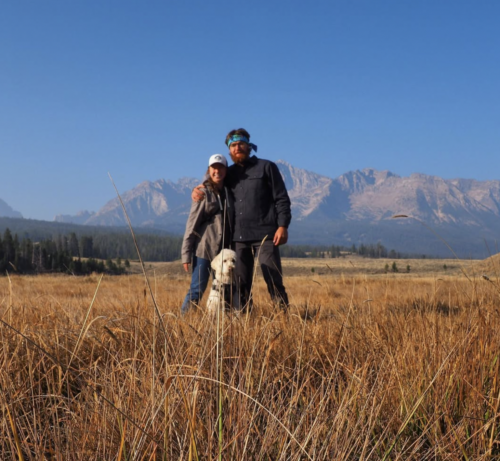
The time off allowed Copley to be something of a student of the game as he watched the action from the press box during the rehab process.
“I guess in a way it allowed me to have a fresh slate after taking off that much time, where I could really input things into my game that would help me or take things out that won’t. It kind of helped me do some introspection. It was obviously a tough time for that to happen. But I feel good now and feel like I’m better for having to go through that.”
The Kings rewarded that tenacity by re-signing Copley to a one-year contract for this season, and he has spent most of the year as the starter for the team’s AHL affiliate, the Ontario (California) Reign, the next level down from the NHL.
His Ontario coach, former NHLer Marco Sturm, was pleased with Copley’s focus and work ethic when he was named AHL player of the week in early December after recording a shutout in one start, and allowing just a single goal in another. Sturm also praised his veteran goalie’s moxie coming off the medical setback.
“It’s not easy coming back from that injury, and it took him a little bit. You could see it in the games now – how calm he is,” he said in a team press release. “And this is the old Pheonix Copley like we’ve seen in the past and for us as a team, and you look at our back end, it’s pretty nice to have a guy like him.”
At 33, Copley, refreshed from his injury, feels like he still has a lot of hockey left in his tank. “I wouldn’t be here if I didn’t think that. I feel like I’ve got good years left in me. I feel young; I for sure don’t feel that I’m old or anything.”
Ontario is only about 40 miles away from the Kings’ Crypto.com Arena in downtown Los Angeles, but only injuries and/or ineffective play from the team’s two goaltenders Darcy Kuemper and David Rittich will get Copley back for an expanded role in the NHL club’s stretch drive and posteason, so he seems further away than that relatively short distance (he’s had a couple brief call-ups this season to fill in and played one game in relief of the starter Rittich in a loss to the Toronto Maple Leafs).

And you know what? That’s fine with Copley, who has traveled quite the ride from North Pole to all those hockey pit stops along the way. He may be a phone call away from the big stage again, but for now the task is to lead his Reign team into the end of the regular season and the AHL Calder Cup playoffs, which start tonight when Ontario hosts the San Jose Barracuda (ironically, the first two games of that series will be at the Kings’ NHL venue). Wherever and whenever the season concludes, he’ll head back north, get on the water for some Alaska fishing and relaxation, and hopefully do it all over again next season.
“I don’t really think about that too much. I’m just trying to do the best I can and the cards will fall wherever they may. I try to put myself into a good position to get called up,” he says. “I know it could happen at any time, or it can’t. It’s out of my control, so I’m trying to control what I can control and do my job as best I can. If that’s in the cards, then I’m ready to go.”
And you can bet if it does come before the end of the season or in the Stanley Cup Playoffs, he’ll have phone service to answer that call. ASJ
Editor’s note: Follow Pheonix Copley on Instagram and X, formerly known as Twitter (@pheonixcopley).
Sidebar
HOCKEY PLAYER SPILLS THE TEA OVER NEW SIDE GIG

You’d think Pheonix Copley and his wife Jess spending recent seasons living in health-conscious Los Angeles would make sense for fueling their idea to create an athlete-inspired tea brand. Instead, the lightbulb went off in their heads in, of all places, the chocolate capital of the country.
While he played goalie for Pennsylvania’s Hershey Bears, the Washington Capitals’ American Hockey League affiliate, in the late 2010s, Pheonix and Jess were perusing a rural farmer’s market near the city famous for the iconic candy company it’s named for. There, a vendor’s stall piqued their interest.
Tea ingredients were for sale, so the Copleys stocked up and started making their own blends that Pheonix drank before and after games as a new hydration and recovery source. When they tinkered with different combinations, Pheonix and Jess solicited a small nutrition-focused company in Chicago to help mix the teas they were most enthusiastic about, and voila!: Their company, Athletes Apothecary, was born.
Copley, ahem, spilled the tea about his business venture.
“I really enjoy tea and it’s been a fun little project. We’ve had some good reviews on it and I think it’s a good tool for athletes. It’s certainly been helpful for me and for some other guys who use it,” Copley says.
Athletes Apothecary features three specific teas designed for pregame boost, postgame recovery and even a late-night version to help get better sleep. And while tea may seem a bit unconventional compared to say, Gatorade or other hydration staples, it’s been an effective option for Copley.
He usually brews up a large cup on the afternoon of a game, keeps it in his locker stall and will sip on it throughout the game.
“Then after the game I’ll go home and have the nighttime one. I drink that one every single night. But I’m not shuffling through (different) teas during the game,” he says.
The reviews of the Copleys’ fledgling company have been good, and teammates with both his current team, the AHL’s Ontario Reign, and his National Hockey League parent club, the Los Angeles Kings, joined team tea and followed their goalie’s lead in brewing up a cup before and after games.
Now the Kings and Reign are monarchs of the tea game for its player preparation and recovery benefits.
“It’s been kind of fun. I brought a bunch in for everybody and they were like, ‘Oh; I really like this one’ or, ‘This one’s been great,’” Copley says. “It’s great to get their feedback.”
As he and Jess pondered starting this venture, Pheonix considered taking some business classes, but instead they’re learning about running their company on the fly. It’s something they might expand on after Pheonix’s playing days are over. But they’re enjoying the process now.
“I’ve always had an interest in business. Right now it’s just something where I just want to help athletes when I can and I want to learn about (owning a) business in my free time. That’s kind of where I’m at right now,” he says. “Right now, I’m just keeping it going now and seeing it where it goes.”
Check out athletesapothecary.com or follow on Instagram (@athletes.apothecary) for more information. -CC



